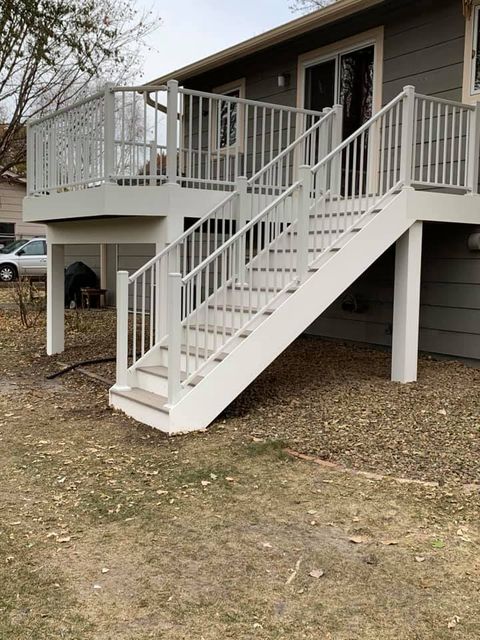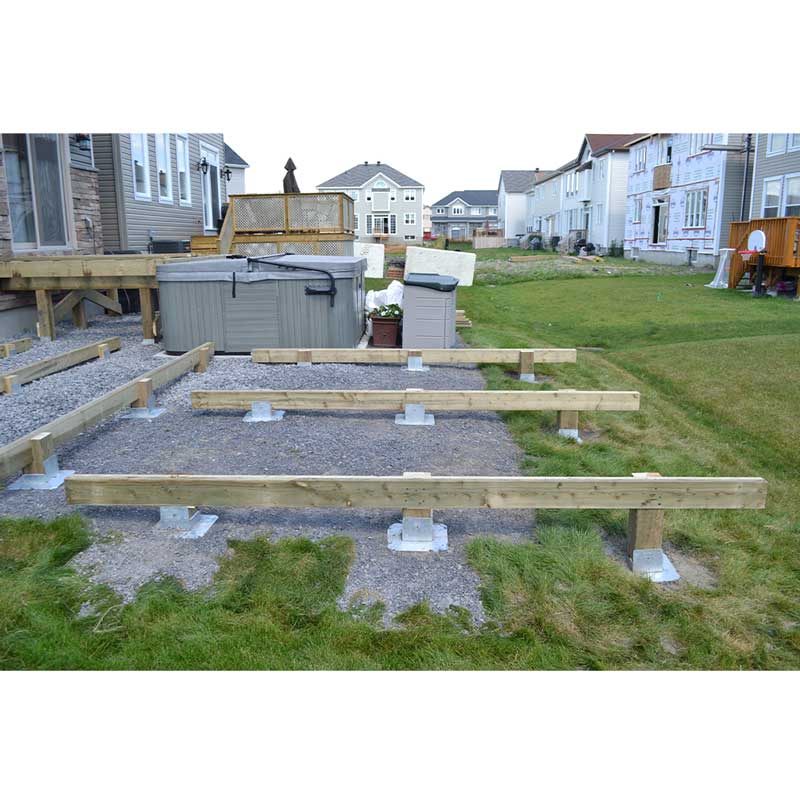Structural Stability Issues: Picking the Right Deck Footings for Your Outdoor Task
Structural Stability Issues: Picking the Right Deck Footings for Your Outdoor Task
Blog Article
Selecting the Right Deck Footings for Security and Durability
When it comes to constructing a deck, among the most critical choices you will make is picking the ideal footings for security and sturdiness. The longevity and security of your deck depend heavily on the kind of footings you pick, as they supply the important assistance and stability to hold up against the test of time. With a myriad of options readily available, it can be frustrating to identify which footings are best matched for your certain demands. In this conversation, we will explore the numerous sorts of deck footings, take into consideration the crucial factors to evaluate when deciding, and dive right into the benefits and drawbacks of different alternatives. By the end, you will certainly have a more clear understanding of the selections available and be better geared up to make an informed decision for your deck project.
Types of Deck Grounds
There are several sorts of deck grounds that can be made use of, each offering unique advantages and factors to consider. One common sort of footing is the concrete pier footing. These footings contain a round opening full of concrete, which offers a solid foundation for the deck messages. Concrete pier grounds are reasonably very easy to install and offer outstanding stability, making them a preferred selection for several deck tasks.
Another sort of ground is the helical heap ground. Helical heaps are steel shafts with helical plates affixed to them. These grounds are set up by screwing them into the ground, which develops a safe and secure structure for the deck. Helical stack footings are optimal for areas with difficult soil problems, as they can be set up in nearly any sort of soil. They likewise allow for easy change and progressing of the deck if required.
Additionally, some contractors go with precast concrete grounds. These footings are made from long lasting concrete and be available in different shapes and dimensions to fit different deck styles. Precast concrete footings are practical to install and give a steady base for the deck framework.
Finally, an additional option is the post-in-anchor ground system. This kind of ground involves driving a steel anchor into the ground and affixing it to the deck message. It supplies versatility in regards to positioning the deck messages and is ideal for decks with lightweight frameworks.
When choosing the ideal kind of deck footing, it is vital to take into consideration factors such as dirt problems, deck tons, and neighborhood structure codes (Deck Footings). Consulting with a specialist specialist or architectural engineer can help make sure the suitable footing is picked for a secure and safe deck
Aspects to Take Into Consideration When Selecting Grounds
When picking the suitable footings for a deck, it is critical to carefully think about numerous variables such as soil conditions, deck load, and adherence to neighborhood building regulations. These aspects play a substantial duty in ensuring the stability and resilience of the deck framework.
Among the key variables to consider is the soil problems. The sort of dirt on which the deck will certainly be constructed identifies the type of footings needed. For example, decks improved loosened or sandy soils may require deeper footings to offer sufficient support and avoid settling. On the various other hand, decks constructed on clay or extensive soils may call for grounds that can fit the soil's propensity to increase and agreement.
One more essential factor is the deck lots. The weight of the deck, consisting of the products used and any kind of prospective live lots such as furniture or events, must be thought about when choosing footings. The grounds should be designed to birth the weight of the deck and distribute it equally to stop any structural issues or failings.
Lastly, adherence to neighborhood building codes is paramount. Building regulations differ from region to area, and it is important to conform with the specific demands established by the local authorities. Deck Footings. These codes ensure that the deck is constructed safely and fulfills the necessary requirements for architectural stability and load-bearing capability
Concrete Footings: Disadvantages and pros

Concrete footings offer a number of benefits and disadvantages when used as the foundation for a deck. On the favorable side, concrete footings offer exceptional security and resilience. Concrete is a strong and stiff product that can sustain hefty lots and endure numerous climate conditions. It also has a long lifespan, making it a reliable selection for long-term use.
An additional benefit of concrete footings is their adaptability. They can be poured into various forms and dimensions to fit different deck designs and configurations. Concrete footings can be personalized to fit the particular needs and requirements of the deck framework.
Nonetheless, there are likewise some drawbacks to making use of concrete grounds. This can enhance the total price of the deck job and may call for expert assistance.

Helical Piers Vs. Sonotubes: Which Is Much better?
In thinking about the foundation options for a deck, the contrast in between helical piers and sonotubes is vital in identifying the remarkable option. They are twisted right into the ground making use of hydraulic machinery, providing a durable and steady foundation for the deck.
When it concerns security and durability, helical piers have the upper hand. The helical plates on the piers create a solid hold with the soil, protecting against any kind of motion or moving of the deck. This is specifically useful in areas with unsteady or changing soil problems. here are the findings Sonotubes, on the other hand, count exclusively on the concrete loading for stability, which might not provide the same level of strength and resistance.
In terms of installment, helical piers are fairly less complicated and faster to set up contrasted to sonotubes. The hydraulic machinery utilized to turn the piers into the ground makes sure our website a quick and reliable procedure. Sonotubes, on the various other hand, require digging holes and pouring concrete, which can be labor-intensive and lengthy.
Furthermore, helical piers are an even more versatile choice. If required, they can be used in different dirt problems and can be adjusted or reinforced. Sonotubes, on the other hand, may need additional support, such as rebar, in specific soil problems or locations with high lots demands.
Choosing the Right Footings for Your Deck's Measurements
For optimum architectural honesty, it is vital to meticulously select the suitable footings that line up with the dimensions of your deck. The dimensions of your deck, including its length, height, and size, play a considerable duty in determining the type and size of grounds called for.
When picking grounds for your deck, it is very important to consider the load-bearing capacity of the soil. The weight of the deck, incorporated with the weight of any kind of furnishings or individuals on it, puts in a considerable force on the footings (Deck Footings). It is important to choose footings that can adequately support this weight without moving or sinking over time.
The size and shape of the grounds must also be considered. Larger decks with better dimensions require bigger footings to provide adequate security and assistance. The shape of the footings, whether they are square or round, relies on the design and format of the deck. Furthermore, the deepness at read the full info here which the footings are installed should be determined based upon the frost line in your region to prevent any kind of heaving or changing due to freezing temperatures.
Conclusion
In verdict, picking the right deck footings is vital for making certain stability and longevity. Factors such as the type of footings, the deck's dimensions, and the pros and cons of various choices ought to be thought about.
These grounds are composed of a round opening loaded with concrete, which gives a solid structure for the deck articles. Concrete pier footings are fairly simple to mount and use superb security, making them a preferred selection for many deck tasks.
Precast concrete grounds are practical to install and offer a steady base for the deck structure.
It provides flexibility in terms of positioning the deck posts and is suitable for decks with lightweight frameworks.
Concrete grounds supply numerous advantages and drawbacks when utilized as the foundation for a deck.
Report this page